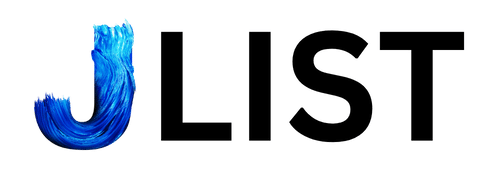Managing software assets across an enterprise has become one of the most complex challenges facing modern organizations. A corporate software inspector serves as your comprehensive solution for discovering, monitoring, and managing all software applications within your business environment. As companies deploy hundreds or even thousands of software applications across multiple departments and locations, maintaining visibility and control over these digital assets becomes critical for operational efficiency, security, and regulatory compliance.
The stakes have never been higher for organizations that fail to properly manage their software portfolios. Companies can face hefty fines for license violations, security breaches from unpatched applications, and significant budget overruns from redundant or unused software purchases. Without proper oversight, even well-intentioned IT teams struggle to maintain accurate inventories of their software landscape.
Challenges in Corporate Software Management
Software sprawl represents one of the most pervasive issues plaguing modern enterprises. Departments often purchase and deploy applications independently, creating a fragmented landscape where IT teams lose visibility into what’s running across their networks. This decentralized approach leads to duplicate functionality, wasted spending, and potential security gaps.
Licensing compliance presents another significant hurdle for organizations. Software vendors conduct regular audits, and companies found in violation face substantial financial penalties. Microsoft alone generates billions in revenue annually from compliance settlements, highlighting the financial risk of poor license management. The complexity of different licensing models—from per-user to per-device to consumption-based pricing—makes manual tracking nearly impossible at scale.
Security risks multiply when organizations lack comprehensive software visibility. Unmanaged applications may not receive critical security updates, creating vulnerabilities that cybercriminals can exploit. The 2017 Equifax breach, partially attributed to unpatched software, demonstrates how a single overlooked application can lead to catastrophic consequences affecting millions of customers and costing hundreds of millions in damages.
Financial implications extend beyond compliance fines and security breaches. Organizations routinely overspend on software by maintaining licenses for applications that employees no longer use. Industry research suggests that companies waste 30-40% of their software spending on unused or underutilized applications, representing millions of dollars in wasted resources for large enterprises.
Key Features of a Corporate Software Inspector
Software discovery capabilities form the foundation of any effective corporate software inspector. These tools automatically scan networks, endpoints, and cloud environments to identify all installed applications, regardless of how they were deployed. Advanced discovery engines can detect software running in virtual machines, containers, and remote work environments, providing comprehensive visibility across hybrid IT infrastructures.
License management functionality helps organizations track their software entitlements against actual usage. These systems maintain detailed records of purchase agreements, support contracts, and usage rights while providing alerts when utilization approaches license limits. Sophisticated license management modules can handle complex scenarios like virtualization rights, mobility benefits, and software assurance programs.
Compliance tracking features continuously monitor software installations against approved lists and licensing agreements. These capabilities generate reports for vendor audits, track compliance trends over time, and identify potential violation risks before they become costly problems. Automated compliance monitoring reduces the manual effort required for audit preparation and provides defensible documentation of licensing compliance.
Security vulnerability detection integrates with threat intelligence feeds to identify applications with known security flaws. These features prioritize vulnerabilities based on severity and exploitability, helping security teams focus their patching efforts on the most critical risks. Integration with patch management systems can automate remediation workflows for approved updates.
Benefits of Implementing a Corporate Software Inspector
Cost savings represent the most immediate benefit organizations experience after implementing a corporate software inspector. Companies typically reduce software spending by 15-30% within the first year through license optimization, elimination of redundant applications, and better negotiation leverage with vendors. One Fortune 500 manufacturing company saved $2.3 million annually by identifying and eliminating unused software licenses across their global operations.
Risk reduction extends across multiple dimensions of business operations. Compliance risks decrease through automated monitoring and reporting capabilities that ensure ongoing adherence to licensing agreements. Security risks diminish as organizations gain visibility into their complete software inventory and can prioritize vulnerability management efforts effectively.
Improved security posture results from comprehensive software visibility and automated vulnerability tracking. Organizations can quickly identify and address security gaps, reduce their attack surface, and demonstrate security compliance to auditors and customers. The ability to rapidly locate and patch vulnerable applications significantly reduces the window of exposure to cyber threats.
Better compliance outcomes emerge from systematic tracking and reporting capabilities. Organizations can respond quickly to vendor audit requests with accurate, up-to-date information about their software deployments and licensing compliance. This preparedness often leads to more favorable audit outcomes and reduced settlement costs.
Best Practices for Using a Corporate Software Inspector
Effective implementation begins with comprehensive discovery across all IT environments, including endpoints, servers, cloud instances, and mobile devices. Organizations should configure automated scanning schedules to maintain current inventory data and establish processes for onboarding new systems into the monitoring framework.
Regular audits should become part of standard IT operations, with monthly reviews of new software installations, quarterly license utilization assessments, and annual comprehensive compliance evaluations. These regular checkpoints help organizations maintain ongoing visibility and address issues before they become significant problems.
Integration with existing IT infrastructure and workflows maximizes the value of corporate software inspector investments. Connections with IT service management systems, security information and event management platforms, and procurement systems create automated workflows that reduce manual administrative overhead and improve response times.
Continuous monitoring capabilities should be leveraged to establish baselines for normal software usage patterns and alert administrators to unusual activities that might indicate unauthorized installations or potential security incidents. These proactive monitoring capabilities help organizations maintain control over their software environments as they evolve.
Future Trends in Corporate Software Inspection
Artificial intelligence and machine learning technologies are transforming corporate software inspection capabilities. AI-powered systems can predict license usage patterns, automatically categorize discovered applications, and identify anomalous software behaviors that might indicate security threats or compliance violations. These intelligent capabilities reduce the manual effort required for software asset management while improving accuracy and completeness.
Automation continues expanding across software management workflows, from initial discovery through compliance reporting and remediation actions. Advanced automation can trigger license purchases when utilization approaches limits, automatically uninstall unused applications after defined grace periods, and generate compliance reports on demand for vendor audits.
Cloud-native inspection capabilities are evolving to address the growing complexity of multi-cloud and hybrid environments. Modern corporate software inspectors provide unified visibility across on-premises systems, public cloud platforms, and software-as-a-service applications, enabling consistent management practices regardless of deployment model.
Integration with broader IT governance frameworks is becoming standard practice, connecting software asset management with broader enterprise architecture, risk management, and financial planning processes. This holistic approach ensures software decisions align with broader business objectives and regulatory requirements.
Take Control of Your Software Environment
Corporate software inspectors have evolved from nice-to-have tools into essential components of modern IT infrastructure. Organizations that implement comprehensive software inspection capabilities position themselves for better cost control, reduced compliance risks, and improved security outcomes. The complexity of modern software environments demands automated solutions that can provide the visibility and control necessary for effective management.
The investment in corporate software inspection capabilities typically pays for itself within months through cost savings and risk reduction. As software environments continue growing in complexity and regulatory requirements become more stringent, organizations that establish robust software inspection practices now will be better positioned for future challenges and opportunities.

